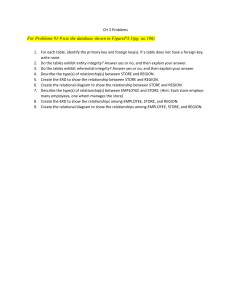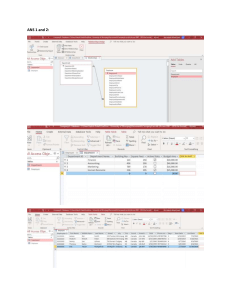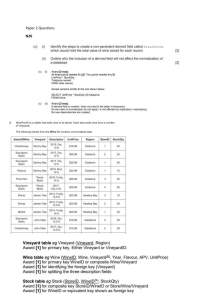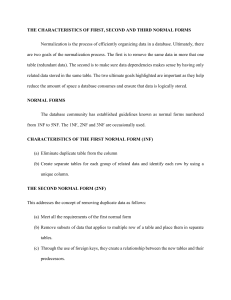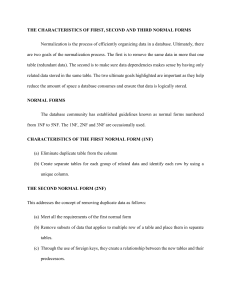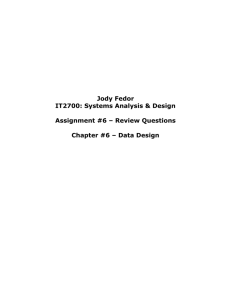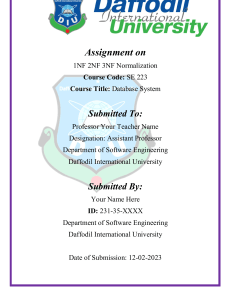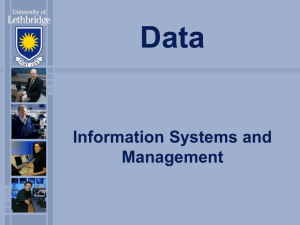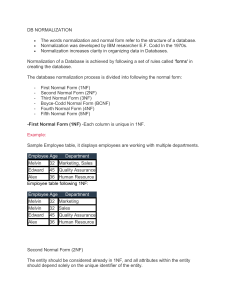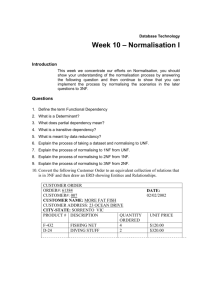Study Guide for Midterm
advertisement
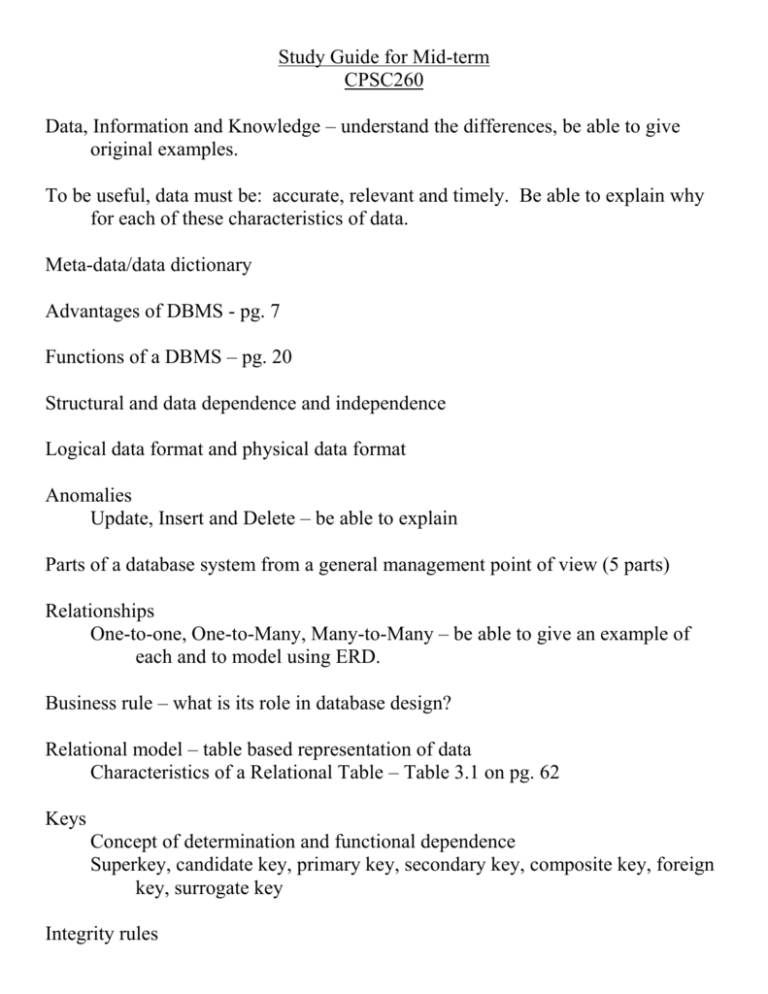
Study Guide for Mid-term CPSC260 Data, Information and Knowledge – understand the differences, be able to give original examples. To be useful, data must be: accurate, relevant and timely. Be able to explain why for each of these characteristics of data. Meta-data/data dictionary Advantages of DBMS - pg. 7 Functions of a DBMS – pg. 20 Structural and data dependence and independence Logical data format and physical data format Anomalies Update, Insert and Delete – be able to explain Parts of a database system from a general management point of view (5 parts) Relationships One-to-one, One-to-Many, Many-to-Many – be able to give an example of each and to model using ERD. Business rule – what is its role in database design? Relational model – table based representation of data Characteristics of a Relational Table – Table 3.1 on pg. 62 Keys Concept of determination and functional dependence Superkey, candidate key, primary key, secondary key, composite key, foreign key, surrogate key Integrity rules Entity integrity, Referential integrity – understand how to determine if a particular table or group of tables have entity and referential integrity Relational Set Operations Understand and be able to perform Select, Project, Join, Product operations Understand the difference between a natural and a left or right outer join operation Understand how to represent 1:1 and 1:M relationships in relational tables Understand how to convert one M:N relationship into two 1:M relationships using a bridge entity Index, unique index – what are these and when would they be used in the design of a database? Multi-valued attributes – what are they and how can they be included into a database design (2 alternatives) Derived attributes – what are they and what is the tradeoff that needs to be considered with respect to derived attributes? Existence dependence – give an example of two entities in which one entity is existence dependent on the other Strong and weak relationships / identifying and non-identifying relationships – understand the difference in the way they are represented on an ERD diagram Weak and Strong entities Optional and Mandatory relationships – how are these represented on an ERD? Normalization – if presented with a table, be able to determine which, if any, normal form it is in. (Must understand the conditions necessary for each of the normal forms 1NF, 2NF and 3NF. Don’t need to know BCNF or 4NF) Also, need to be able to convert a table not in normal form to 1NF, a 1NF table to 2NF, and a 2NF table to 3NF. Understand database design considerations beyond normal forms: Evaluating the primary key (determine if a surrogate key should be used) Attribute atomicity Maintaining historical accuracy Evaluate use of derived attributes Understand what denormalization is and why you might make a decision to denormalize a table in a design. Authorization and Authentication – how might the data required for these system functions be modeled in a database design. (Hint: Covered this in class. Information is not in the book). What is a domain table? What is it used for? Give an example. (Hint: Covered this in class. Information is not in the book).
